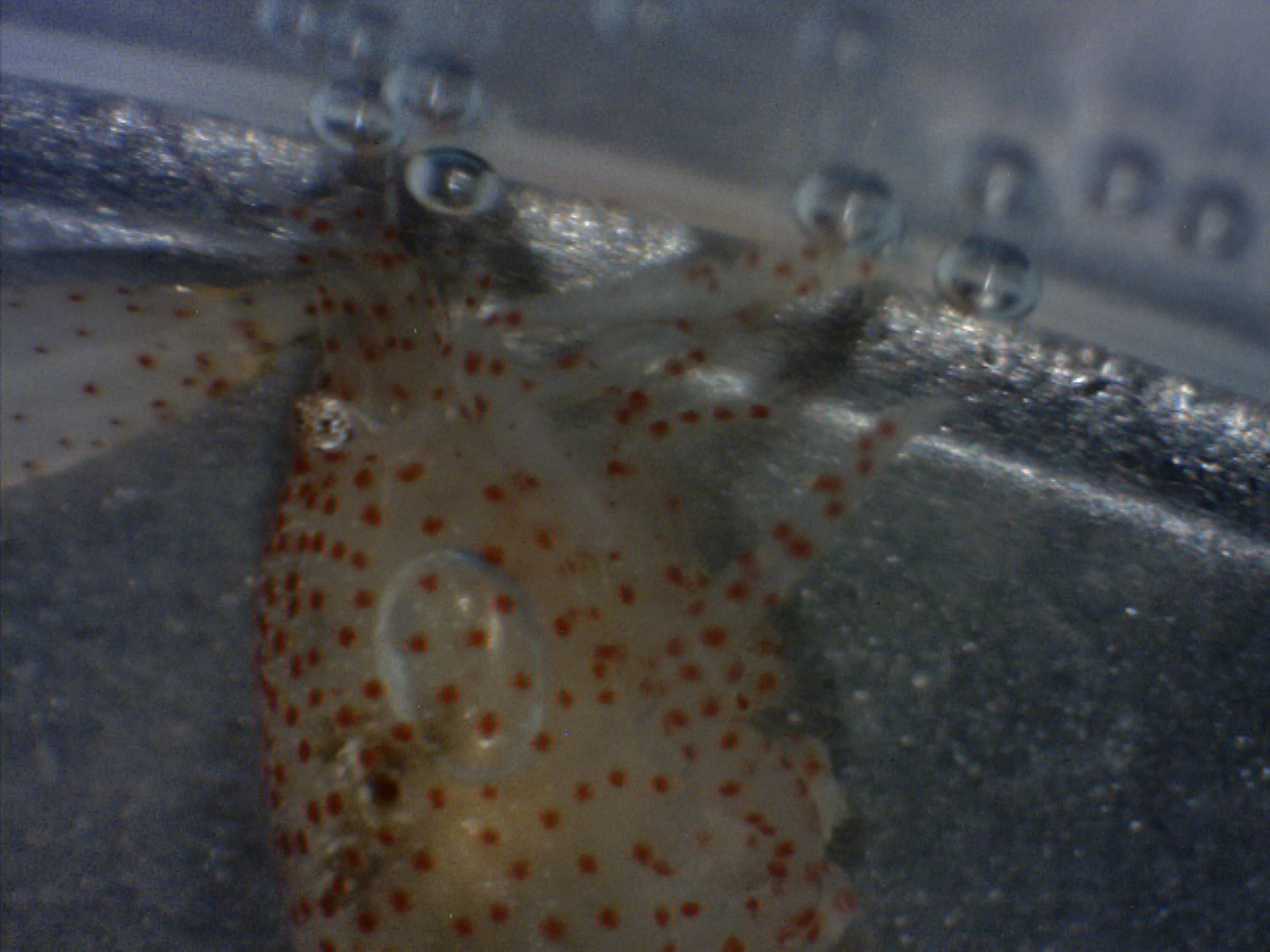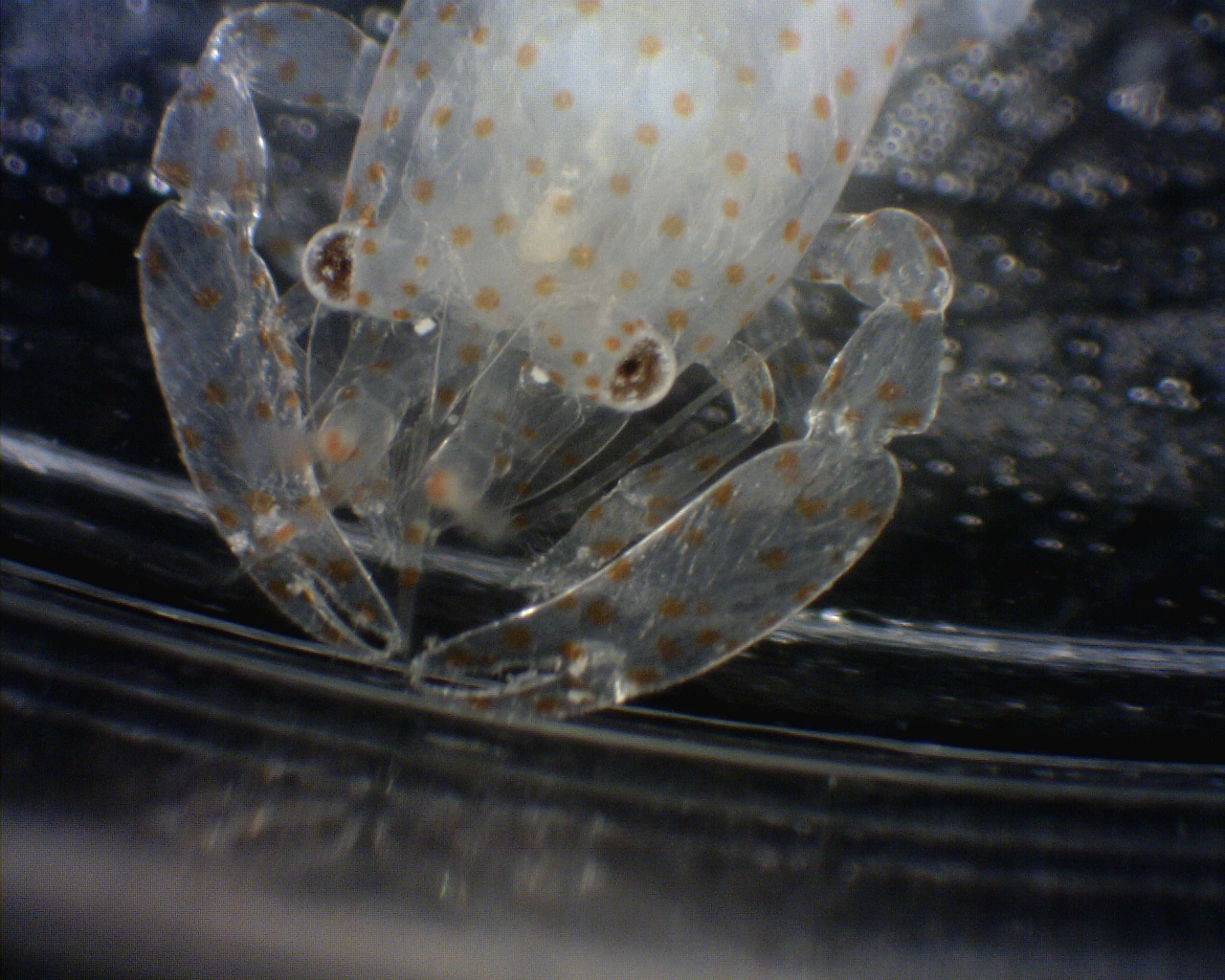Physical Description
Size
There is noticeable dimorphism in size between males and females of C. biunguiculatus. Of the individuals studied on Heron Island, males ranged from 1.4-1.5 cm in length from mouth to tail with a carapace width ranging from 0.4-0.5 cm, while females ranged from 1.8-2.1 cm in length with a carapace width ranging from 0.6-0.7 cm(See Table 1). One juvenile was also studied and had a reduced length of 0.8 cm and a carapace width of 0.3 cm.
|
Pair No.
|
Length (cm)
|
Carapace Width (cm)
|
|
1
|
Male: 1.5, Female: 2
|
Male: 0.4, Female: 0.7
|
|
2
|
Male: 1.5, Female: 2.1
|
Male: 0.5, Female: 0.7
|
|
3
|
Male: 1.4, Female: 1.8
|
Male: 0.4, Female : 0.6
|
|
Juvenile
|
0.8
|
0.3
|
Notes:
Image 2: The size of a female C. biunguiculatus. Notice that the tail is not visible as it is tucked underneath the abdomen. This disguises the animal's true length.
Colouration:
C. biunguiculatus are mainly transparent, although they possess small pink spots of pigmentation over their entire bodies. The juvenile specimen inspected did not have fully developed pigment spots, possessing only transparent orange spots instead.
Image 3: The pink pigmentation as observed on an adult C.biunguiculatus. Notice that the colouration is not localised to one area, but spreads over the entire animal's body.

Image 4: The pink-orange pigmentation as observed on ajuvenile C. biunguiculatus. Notice that the colouration is transparent innature.
Key Features:
- Sexual dimorphism is not just size-related. Male C. biunguiculatus have more developed swimming tails. Meanwhile, females possess enlarged abdomens for carrying eggs and tails are more reduced.
- Segmentation is clearly visible in the tails.
- The mouth parts of C. biunguiculatus are permanently visible.
- The mouth parts are also quite specialised for their particular feeding strategy (see Behaviour.)
- The claws of C. biunguiculatus are found on the second set of legs (as opposed to the first). While the first pair of legs do possess claws they are very small in comparison.
- The front limbs of C. biunguiculatus are covered in small hairs.
|